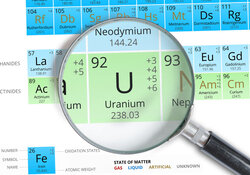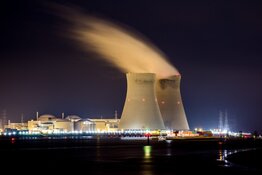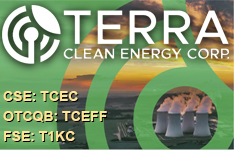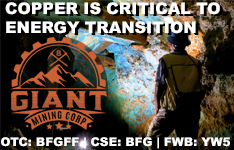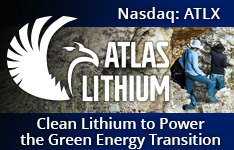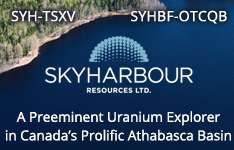In terms of the spot price, the UxC Ux U3O8 Daily Price continued to climb, albeit at a slower pace than recent weeks, closing yesterday at $70.50/lb, up 75c from a week ago and now up ~11% from the recent lows. Last Friday saw the price for spot deliveries to Cameco Corp.'s (CCO:TSX; CCJ:NYSE) Port Hope facility increase by 50c to $70.00, putting it on par with prices at both ConverDyn in Illinois and Orano in France.
However, Monday saw the prices at both these latter locations increase by $1 to $71.00/lb, which is where they all remained for the rest of the week. TradeTech reported that several parties concluded transactions earlier last week, including the one for May delivery that took the Port Hope price to $70.00. They note that buyers were posting firm bids below $70.00, but sellers were reluctant to respond, with firm offers for spot delivery extremely limited.
On Monday, UxC reported that the (long) term market was quiet last week with no new demand reported but that a few utilities are expected to submit formal requests and several are pursuing mid-to-longer term deliveries through direct, off-market discussions with preferred suppliers. Uranium equity returns this week were more mixed, with the sector up only 0.2% w/w on average as of yesterday's close with the weakness in the oil prices weighing on the overall energy complex.
The impressive m/m rebound (up 22.8%) has some ASX-listed names such as Deep Yellow Ltd. (DYL:ASX), Bannerman Energy Ltd. (BMN:ASX), and Boss Energy LLC (BOE:ASX), positive on YTD basis (with BOE up a very impressive 65%!). 2. In last Friday's Feedstock, we (just) missed including a landmark New York Times article "Draft Executive Orders Aim to Speed Construction of Nuclear Plants," which caused quite the stir, so we're including it here despite the news being a week stale:
According to drafts reviewed by The New York Times, the Trump administration is considering several executive orders (EO) aimed at speeding up the construction of nuclear power plants, setting a goal of quadrupling the size of the nation's fleet of nuclear power plants, from nearly 100 gigawatts of electric capacity today to 400 gigawatts by 2050. They envision the Department of Defense taking a prominent role in ordering reactors and installing them on military bases. The article states that four draft orders are marked "pre-decisional" and "deliberative" and that these are among several potential executive orders on nuclear power that have been circulating, but it is not clear which, if any, might be issued.
According to the article, one of the drafts blamed the sluggish pace at the Nuclear Regulatory Commission, the independent federal agency that oversees reactor safety and must approve new designs before they are built. The draft would order the agency to undertake a "wholesale revision" of its regulations and impose a deadline of 18 months for deciding whether to approve a new reactor. However, it is unclear whether the president could order sweeping changes at the Nuclear Regulatory Commission, which Congress established to be independent from the White House. The sector held its' collective breath this week, waiting for a potential announcement, but with President Trump travelling in the Middle East, the pace of both EOs and trade deals slowed (likely temporarily) pending his return.
The NYT EO article last Friday was enough fuel for the Sprott Physical Uranium Trust (SRUUF:OTCMKTS) to announce on Monday that it had completed a US$25.55 million non-brokered private placement of trust units at a price of US$17.14/unit (the NAV as of last Friday's close, which is a ~9% PREMIUM to the unit price), with the proceeds expected to be used to cover general operating expenses of the Trust for the next year (net cash of US$31.4M).
In the Sprott press release, CEO of Sprott Asset Management John Ciampaglia was quoted as saying, "Since the Trust was launched in 2021, it has purchased approximately 48 million pounds of U3O8 and not sold or loaned out a single pound. I would like to take this opportunity to strongly reiterate that SPUT has the tools, including this private placement, to deliver on its intention not to sell any of the physical uranium that Sprott holds on behalf of thousands of investors."
IMHO, while not a huge amount, this raise is a significant event for the sector as it removes a major sentiment overhang related to a potential spot market sale of a small amount of uranium by Sprott to fund the fund's fees, a point which the bears / shorts often pointed to and likely one of the big drivers behind the persistent discount to NAV (recently in the double digits). Closing/erasing the discount to NAV would allow the fund to potentially reactive its ATM and purchase more uranium in the spot market . . . so this private placement was a very important step!
In addition, Sprott put out a very timely update report on the uranium market on Monday: "Uranium Regains Momentum" which is definitely worth a read.
We're seeing more evidence of a positive shift in nuclear sentiment in Europe this week, with important news out of Denmark and Belgium, both of whom have historically been opposed to nuclear power. In Denmark, a Bloomberg article from yesterday notes that Climate Minister Lars Aagaard said in parliament this week that the government will start an analysis of the benefits, risks, and potential of using nuclear reactors to supplement the dominant wind and solar energy, with completion of the report expected next year.
Recall, in 1985, the Danish parliament passed a resolution that nuclear power plants would not be built in the country. But in a parliamentary vote yesterday, World Nuclear News reported that two-thirds of Danish MPs supported the country launching an investigation into the possible use of nuclear power to enhance its energy security.
Also, just yesterday (and reported in the same WNN article), during a plenary session in Belgium, the Chamber of Representatives (lower house of parliament) passed legislation to repeal a 2003 law for the phase-out of nuclear power and banning the construction of new nuclear generating capacity. The legislation passed with 102 votes in favor, eight against, and 31 abstentions. Belgium's last two reactors — Doel 4 and Tihange 3 — were scheduled to close in November 2025.
However, following the start of the Russia-Ukraine conflict in February 2022, the government and Electrabel — the Belgian subsidiary of Engie — began negotiating the feasibility and terms for the operation of the reactors for a further 10 years, with a final agreement reached in December. So with a U-turn (pun-intended) regarding both Denmark and Belgium's stance towards nuclear power, one naturally wonders whether Germany will be the next country to turn positive on nuclear power?
Earlier this week, U.S. Department of Energy @ENERGY announced that Secretary Chris Wright signed a Memorandum of Understanding on energy cooperation with the Kingdom of Saudi Arabia's Minister of Energy as part of the U.S. delegation led by President Trump. The MOU explores the potential for innovation, development, deployment of energy infrastructure in the two countries and outlined areas for cooperation on civil nuclear energy, including safety, security, and non-proliferation programs; vocational training and workforce development; U.S. GenerationIII+ advanced large reactor technologies and small modular reactors; uranium exploration, mining, and milling; and safe and secure nuclear waste disposal. The big question now is if/when the U.S. will sign a 123 agreement with the Saudis (referring to Section 123 of the U.S. Atomic Energy Act of 1954), which is a required step for the U.S. to cooperate with other countries in developing a civil nuclear program by ensuring non-proliferation safeguards and other commitments.
As we've said before, it wouldn't be a Friday without some Kazakh content! This week, we had an announcement from Kazatomprom (NATKY:OTCMKTS; KAP:LSE) that Development Bank of Kazakhstan JSC and Taiqonyr Qyshqyl Zauyty LLP (TQZ) concluded an agreement on opening a credit line to finance the construction of the sulphuric acid plant with a capacity of 800 thousand tons per year in Taikonur, Turkestan region. The total cost of the investment project is about 113 bln tenge (approx. US$221 million), the amount of loan financing from the Development Bank of Kazakhstan is expected at 85 bln tenge (approx. US$167 million).
The participants of TQZ are Ballestra's Kazakh partner, the licensor and supplier of technology and equipment, with a 60% ownership interest and Kazatomprom-SaUran LLP with a 40% ownership interest. The plant is scheduled for completion in the first quarter of 2027. Sounds good, right? Well, if you think so then it is very much worth taking a read of Gold Rock Research's @goldenrock235 latest substack post "Concerns in Kazakhstan" that does a great job highlighting the conspicuous timing of this announcement and potential implications.
Their post also has an excellent analysis of the other major Kazakh news item this week, an inbusiness.kz article whose title translates to "Kazakhstan's Large Uranium Project with Rosatom's Participation Has Stalled," which notes that the Budenovskoye joint venture is showing a significant delay in the field development schedule amid possible disputes among shareholders over the choice of a contractor. Could this be an indication of trouble in paradise between the JV partners Kazatomprom (51%) and Russia's Rosatom (through the Stepnogorsk Mining and Chemical Combine (SMCC)) at 49%, which could mean further delays in the ramp up to 15.6Mlbs U3O8 per year? These two developments outlined by @goldenrock235 could have some utilities on the other side of the JV's uranium sales contracts, a bit nervous.
On Monday (May 12) this week, the Department of the Interior @INTERIOR announced the expedited permitting review of Anfield Energy's (AEX:TSXV; ANLDF:OTCQB; 0AD:FSE) Velvet-Wood uranium mine in San Juan County, Utah — under its newly established emergency procedures. As part of a strategic response to the national energy emergency declared by President Donald J. Trump on January 20, 2025, the project will undergo an accelerated environmental review by the Bureau of Land Management, with a completion timeline of 14 days.
According to the @INTERIOR press release, "If approved, the Velvet-Wood mine project in San Juan County, Utah, would produce uranium and vanadium by accessing the old Velvet Mine workings and developing the Velvet-Wood mineralization. The plan would result in only three acres of new surface disturbance, given the proposed underground mining plan and the existing surface disturbance from the old Velvet mine. Anfield also owns the Shootaring Canyon uranium mill in Utah, which the company intends to restart. That mill would convert uranium ore into uranium concentrate, helping reduce America's reliance on imported uranium concentrate."
In its own release, Anfield notes "Velvet-Wood is the first uranium project to be prioritized under newly established emergency procedures that accelerate the environmental review process for critical energy infrastructure."
Staying in the U.S., on Monday, @nuclearfuels largest shareholder, EnCore Energy Corp. (EU:TSX.V; ENCUF:OTCQX) announced its financial and operational results for the three months ended March 31, 2025. During the quarter, a total of 130,015 pounds U3O8 was extracted and processed at $EU operations in South Texas at a cost of $36.11 per pound, with delivery of 290,000 pounds U3O8 into sales contracts at an average price of $62.89 per pound. In addition to sales of 290,000 pounds, 29,126 pounds U3O8 were transferred to the account of Boss Energy Ltd., the 30% JV partner at the Alta Mesa Project. U3O8 inventory at quarter-end totaled 153,058 pounds at a cost of $40.39 per pound, with cash and equivalents of $29.7 million and working capital of $35.7 million.
Shifting states to Wyoming, this week Peninsula Energy Limited (PEN:ASX) announced that it had received the main regulatory approvals required to commence uranium recovery operations at the Kendrick Project Area of the Lance Projects. At the end of CY2022, the Company applied to the State of Wyoming Department of Environmental Quality (WDEQ) Land and Quality Division to amend the existing Ross Project Area's Permit to Mine and Source Materials License to include the Kendrick Project Area as an expansion to the already approved Ross Project Area.
The WDEQ has now approved this amendment, granting both the Permit to Mine and the Source Materials License for Kendrick. In addition, the Underground Injection Control Program Aquifer Exemption request for the proposed injection zone of the Kendrick Project Area has been approved by the U.S. Environmental Protection Agency (EPA) Region 8, based on the review of information provided by the WDEQ. These represent the final key approvals required by the WDEQ and its Uranium Recovery Program and marks an important milestone for the company, enabling commencement of mining operations at the Kendrick Project Area.
The press release notes, "With refreshed leadership in place and a strong commitment to disciplined execution, Peninsula is diligently working through an updated production forecast for the Lance Projects to ensure the Company can sustainably and successfully develop into a near-term and fully independent uranium producer . . . The company wishes to advise that it is has currently paused uranium capture operations whilst it investigates an issue with piping inside the previously constructed Phase I of the Central Processing Plant (CPP). Peninsula expects the issue to be resolved or rectified in advance of commissioning the currently under construction Phase II of the CPP." There has been a trading halt in place at the company's request since the suspension notice on April 23, 2025.
| Want to be the first to know about interesting Uranium investment ideas? Sign up to receive the FREE Streetwise Reports' newsletter. | Subscribe |
Important Disclosures:
- As of the date of this article, officers and/or employees of Streetwise Reports LLC (including members of their household) own securities of Cameco Corp.
- Greg Huffman: I, or members of my immediate household or family, own securities of: [COMPANY]. My company has a financial relationship with [COMPANY]. My company has purchased stocks mentioned in this article for my management clients: [COMPANY] I determined which companies would be included in this article based on my research and understanding of the sector.
- Statements and opinions expressed are the opinions of the author and not of Streetwise Reports, Street Smart, or their officers. The author is wholly responsible for the accuracy of the statements. Streetwise Reports was not paid by the author to publish or syndicate this article. Streetwise Reports requires contributing authors to disclose any shareholdings in, or economic relationships with, companies that they write about. Any disclosures from the author can be found below. Streetwise Reports relies upon the authors to accurately provide this information and Streetwise Reports has no means of verifying its accuracy.
- This article does not constitute investment advice and is not a solicitation for any investment. Streetwise Reports does not render general or specific investment advice and the information on Streetwise Reports should not be considered a recommendation to buy or sell any security. Each reader is encouraged to consult with his or her personal financial adviser and perform their own comprehensive investment research. By opening this page, each reader accepts and agrees to Streetwise Reports' terms of use and full legal disclaimer. Streetwise Reports does not endorse or recommend the business, products, services or securities of any company.
For additional disclosures, please click here.


